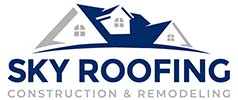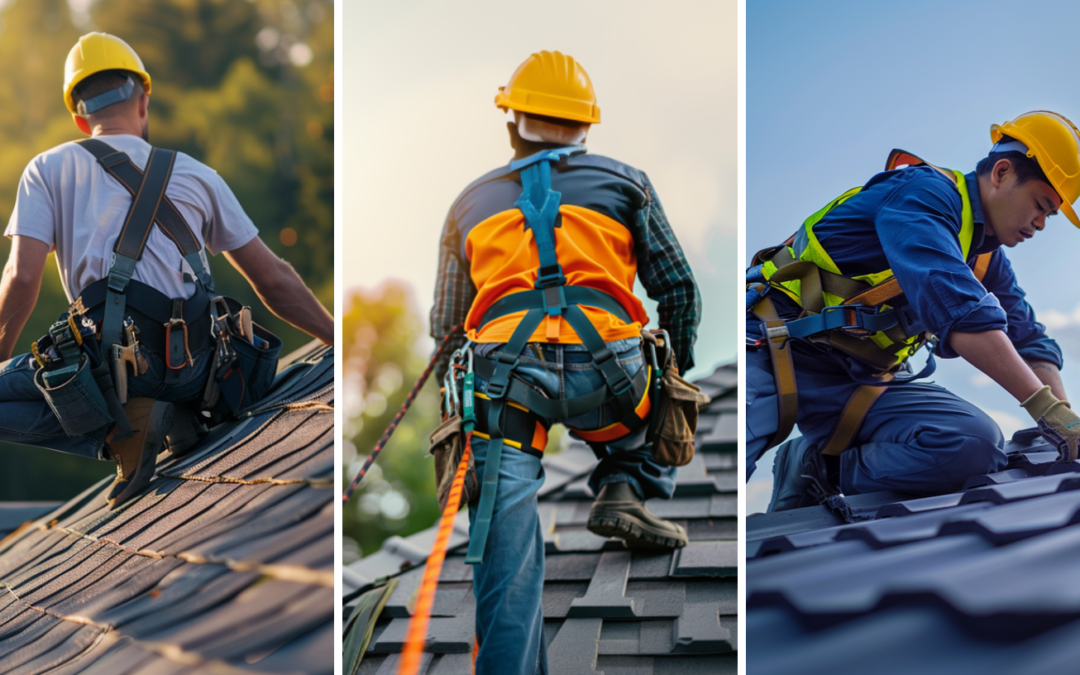Definition of Safety Harness
The primary purpose of a safety harness is to distribute the force of a fall across the most vital parts of the body, such as the chest, back, and pelvis, thus reducing the risk of severe injuries. Safety harnesses often feature additional safety features like shock-absorbing lanyards or connectors to protect the user in the event of a fall. Including additional fall protection equipment can significantly enhance safety, and selecting the right equipment for the specific job is crucial to ensure maximum protection and efficiency.
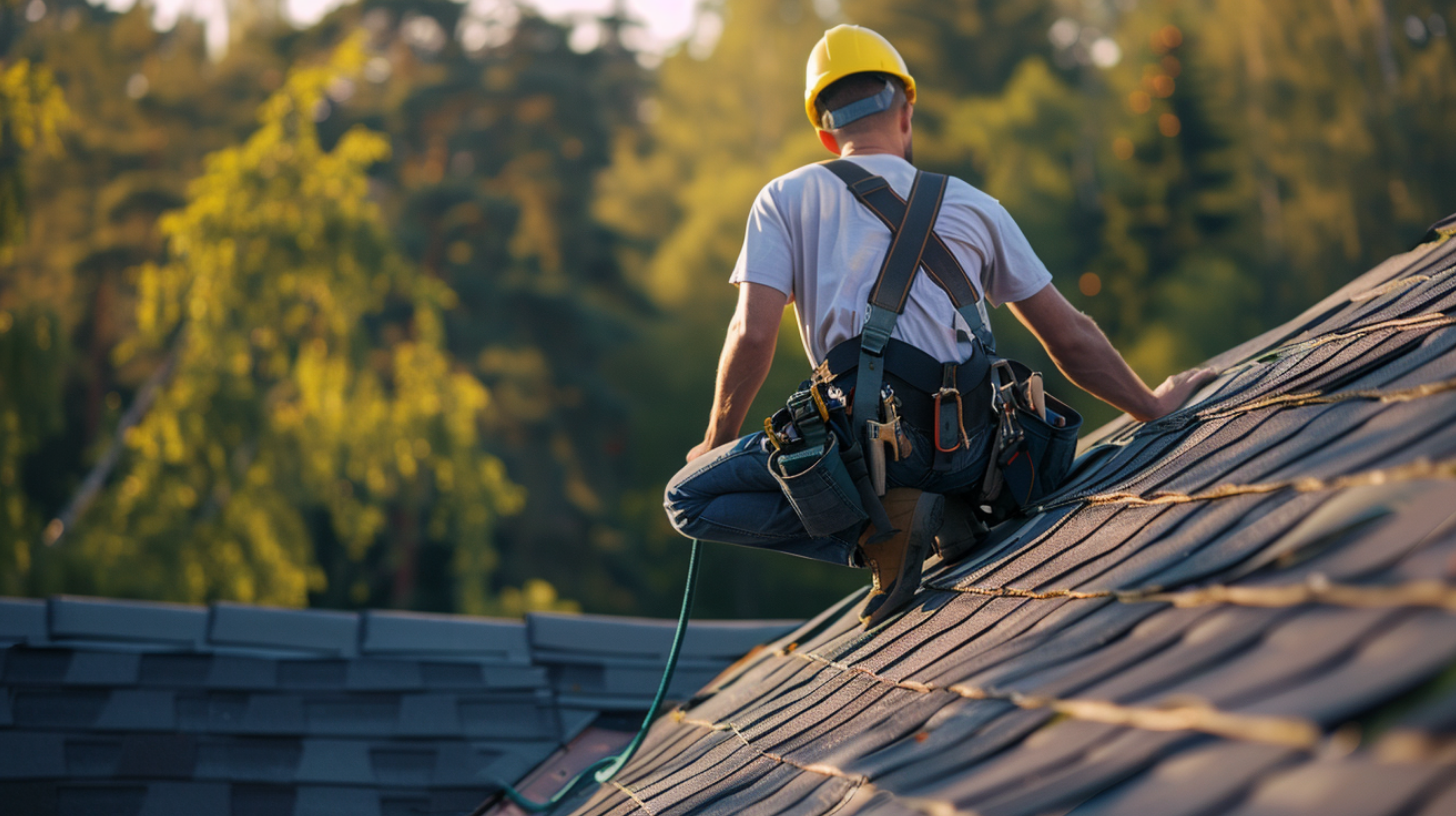
Safety Harness - Types of Safety Harnesses - Sky Roofing Construction & Remodeling
Types of Safety Harnesses
One common type is the full-body harness, which distributes the forces of a fall over the entire body, reducing the risk of injury. Another type is the chest harness, which is ideal for activities that require upper body movement while still providing support and preventing falls. For those working in confined spaces or at dangerous heights, a suspension harness may be the best choice, as it allows workers to be suspended comfortably while also providing fall protection.
Safety harnesses come in various styles to suit different needs. The vest-style harness offers added convenience and comfort, often incorporating tool pouches for easy access to essential tools. Another popular design is the cross-over style harness, which provides an excellent balance of support and freedom of movement. While some harnesses can be expensive due to advanced features and materials, others may be the cheapest option yet still meet basic safety requirements. It’s crucial to consider the maximum capacity of each harness, ensuring it meets the demands of the specific job and user.
The type of safety harness needed will depend on the specific job requirements and the level of protection required. By using the correct type of safety harness, workers can feel confident and secure in their work environment, reducing the risk of accidents and promoting a safety culture.
Full-body Harness
The comfort aspect is crucial as workers often wear harnesses for extended periods. They also provide freedom of movement, enabling workers to perform their tasks efficiently. Ease of use is another advantage, as these harnesses are designed to be easily worn and adjusted. Lumbar support is incorporated to prevent strain on the lower back during long work hours.
Full-body harnesses come with positioning rings, allowing workers to position themselves safely while working at heights. Reliable fall protection is crucial when dealing with dangerous equipment. The robust design of these harnesses ensures that workers are protected even in environments where dangerous equipment is present, further enhancing overall safety.
Velocity Harness
The velocity harness is recommended for various applications, including construction, roofing, industrial maintenance, and more. Its durable construction and reliable design make it a trusted choice for professionals in multiple industries. With its exceptional features, specifications, compliance with safety standards, available sizes, and recommended applications, the velocity harness is an ideal choice for anyone needing a reliable and efficient safety harness.
Construction Harness
These harnesses are designed to withstand high-impact forces and distribute weight evenly, reducing the risk of accidents and injuries. With their sturdy construction and adjustable straps, construction harnesses ensure a secure fit for users of different sizes. Whether working at heights, in confined spaces, or on scaffoldings, using a construction harness is crucial for maintaining safety on construction sites.
Key Features and Benefits
Safety harnesses have several key features that make them highly reliable in hazardous environments. One of the primary features is the durable webbing material, designed to withstand heavy loads and extreme conditions. Additionally, safety harnesses feature adjustable straps and buckles, including chest and abdominal straps, allowing workers to customize the fit for maximum comfort and flexibility. Many harnesses also come equipped with additional padding, shoulder pads, and back support to minimize fatigue and enhance wearer comfort during long hours of use.
Furthermore, high-quality safety harnesses are often equipped with multiple attachment points, including lanyard keepers, for versatility and compatibility with different fall protection systems. Including chest strap adjustments and elastic chest straps ensure a secure fit for various body types and movements, which is especially crucial when working on horizontal lifelines.
The benefits of safety harnesses are numerous and significant. Firstly, they provide a crucial lifeline to workers by minimizing the risk of falls from heights, thereby safeguarding their well-being. Safety harnesses also promote a sense of security and confidence among workers, allowing them to focus on their tasks without worrying about falling.
Additionally, these harnesses play a vital role in compliance with safety regulations and industry standards, enabling businesses to avoid penalties, lawsuits, and reputational damage. Furthermore, safety harnesses benefit productivity, as workers who feel safe and protected are likelier to perform their duties efficiently and effectively. Investing in high-quality safety harnesses is essential when working safely at heights.
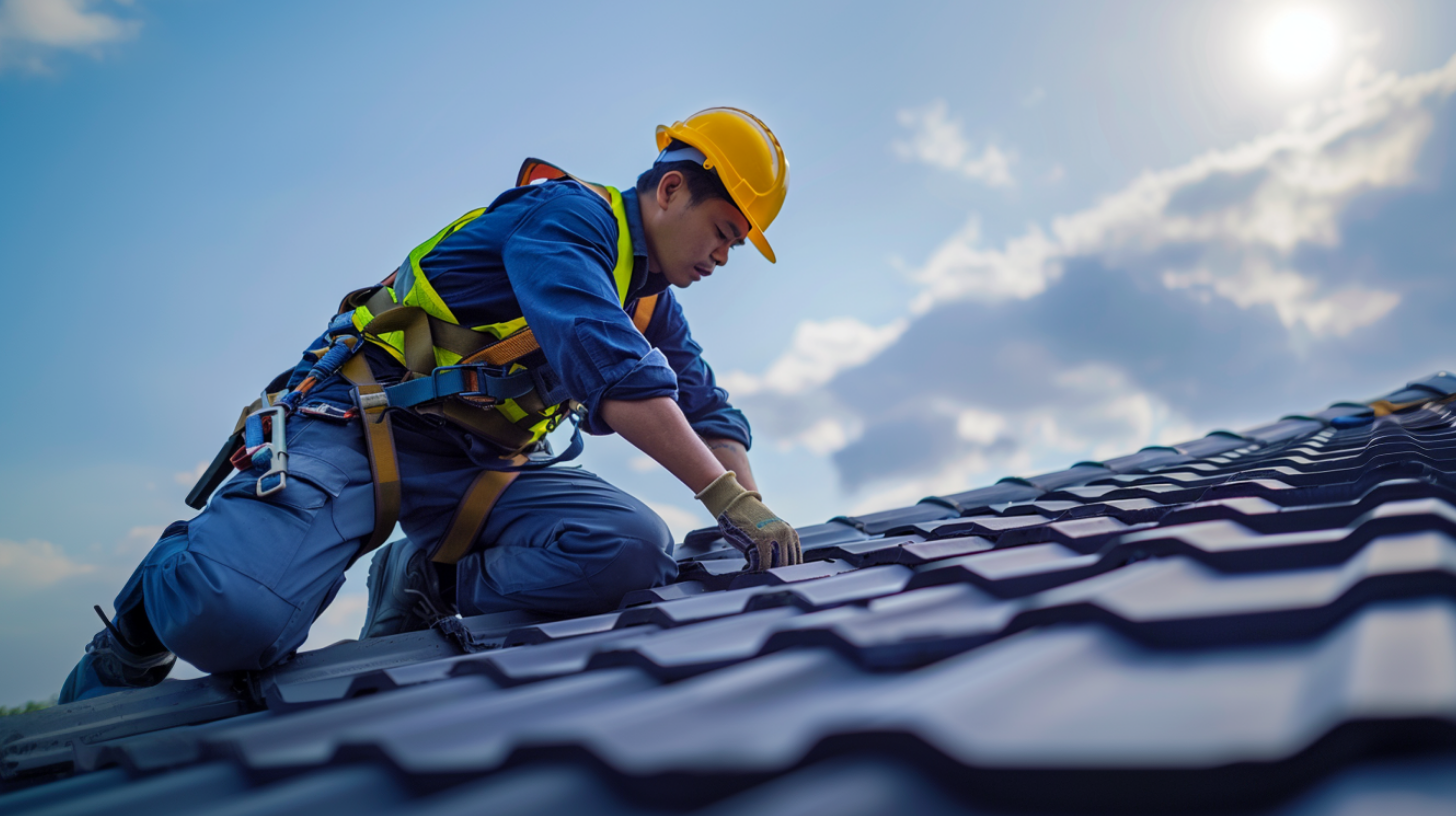
Safety Harness - Safety Standards and Regulations - Sky Roofing Construction & Remodeling
Safety Standards and Regulations
Safety standards and regulations aim to establish specific requirements and procedures for using safety harnesses. These standards are developed by government agencies, industry organizations, and professional bodies to ensure consistent and comprehensive safety practices. By complying with these regulations, companies demonstrate their commitment to worker safety and minimize the potential for accidents or injuries caused by falling from heights. These standards often outline specific criteria for harness construction, durability, weight capacities, attachment points, and inspection procedures.
Moreover, safety regulations also necessitate comprehensive training programs for workers, ensuring they have the knowledge and skills to use safety harnesses properly. By emphasizing the importance of proper fitting, adjustment, and inspection, these guidelines enhance the effectiveness of safety harnesses in preventing falls and minimizing potential injuries. Adhering to safety standards and regulations safeguards workers and help businesses avoid legal liabilities, maintain a positive reputation, and promote a safety culture within the organization, all while ensuring energy efficiency.
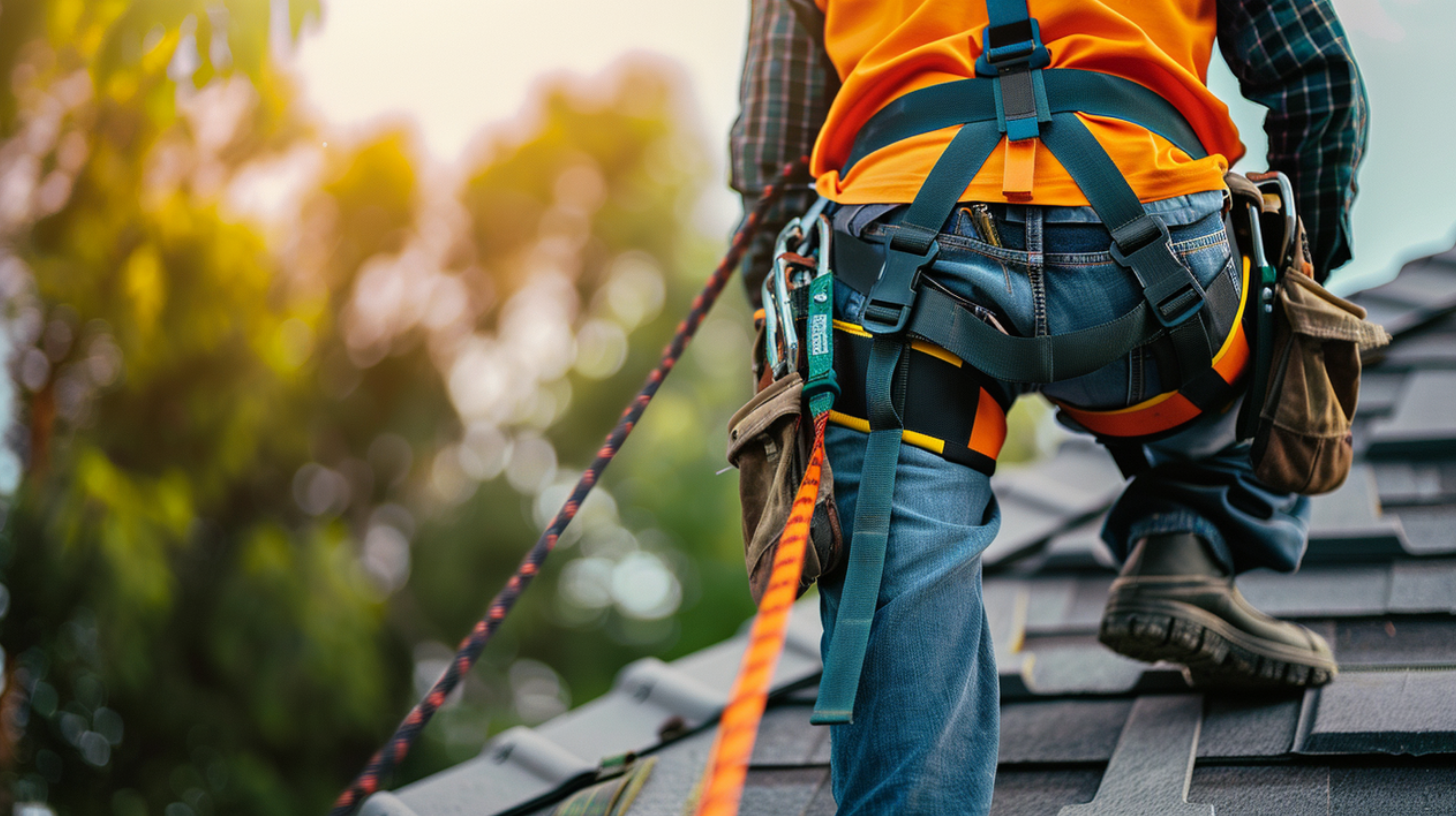
Safety Harness - Components of a Safety Harness - Sky Roofing Construction & Remodeling
Components of a Safety Harness
Few items in the world of safety equipment are as crucial and effective as a safety harness. Designed to protect individuals working at heights or in hazardous environments, safety harnesses provide invaluable support and security. Here are the different components of a safety harness, highlighting their importance and discussing how they contribute to the overall safety and well-being of the wearer:
Full Body Harness
A key component of OSHA and ANSI-compliant safety harnesses is the full-body harness, which wraps around the user’s torso, shoulders, and legs. Constructed from sturdy materials such as nylon webbing or synthetic fibers, the full-body harness is designed to distribute impact forces evenly throughout the body during a fall. Equipped with adjustable straps and buckles, it ensures a snug fit for different body shapes and sizes. The full-body harness is the primary attachment point for various safety features, such as the dorsal D-ring and lanyard.
Dorsal D-Ring
Additionally, anchors with D-rings can be used with the single adjustable D-ring on the harness, providing additional attachment points for lanyards or lifelines. The adjustable back D-ring allows for flexibility in positioning, ensuring a comfortable and secure fit for the worker. These features enhance the overall safety and effectiveness of the harness in preventing falls and protecting workers at heights.
Lanyard and Shock Absorber
Combining a full-body harness, dorsal D-ring, lanyard, and shock absorber is vital in safeguarding the wearer from potential falls and injuries. By investing in a high-quality safety harness that meets industry standards, individuals can significantly enhance their safety and enjoy peace of mind while completing their jobs.
Shoulder Straps
Ensure Safety and Satisfaction with Sky Roofing Construction & Remodeling
Willis Vachon is a seasoned contributing writer for Sky Roofing Construction & Remodeling, specializing in the technical and safety aspects of roofing construction. With a keen eye for detail and a passion for ensuring quality and safety in every project, Willis provides valuable insights that help both professionals and homeowners make informed decisions about their roofing needs.
